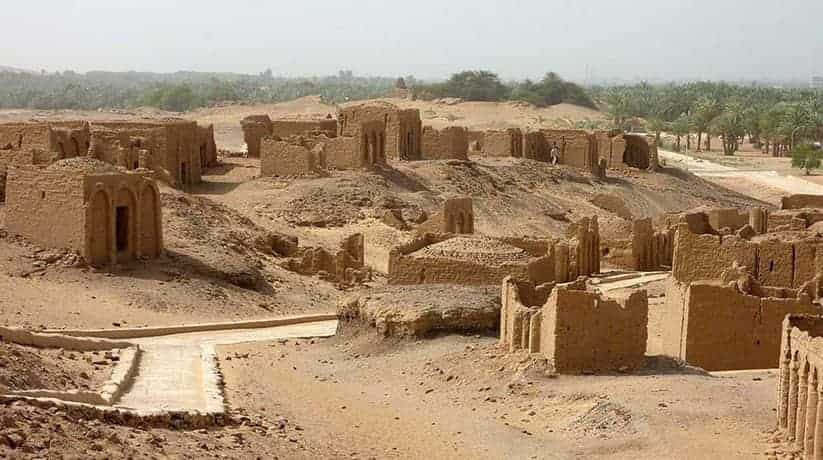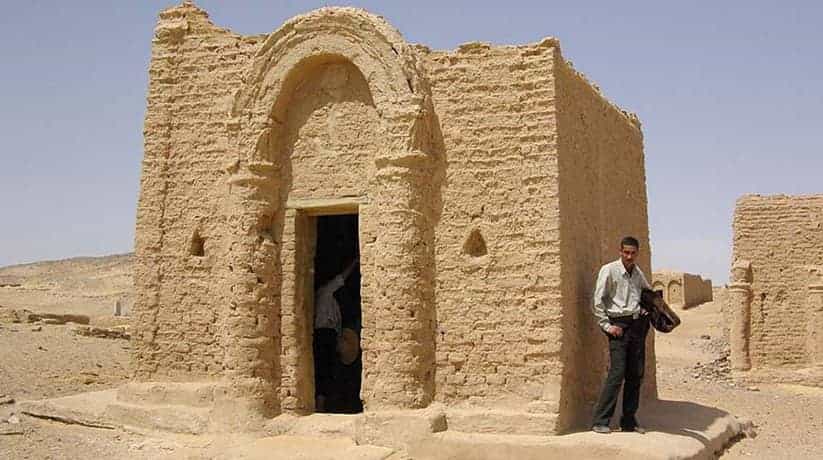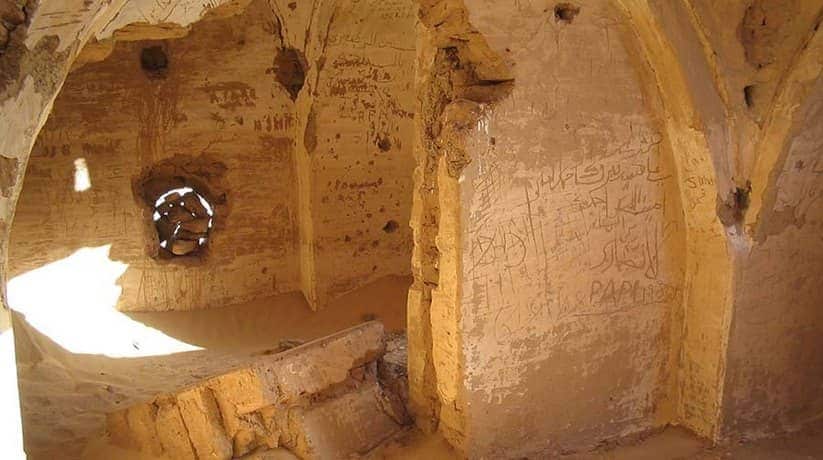El Bagawat Necropolis Kharga Oasis information, tours, prices and online booking
El Bagawat Necropolis located about 3km from the center of el-Kharga Oasis. In fact, it is 1km north of the temple of Hibis. Moreover it sprawls up the lower southern foothills of Gebel El Teir. Furthermore, El Bagawat (or Al Bagawat) is perhaps the oldest major Christian cemetery in the world. In fact, it became a main tourist attraction for Kharga Oasis. The cemetery consists of a vast expanse of domed mud brick mausoleums. Moreover, it also consists of underground galleries which dates back to the 4th century AD. Furthermore, it built over the site of an earlier Egyptian necropolis of pit-graves.
As a burial ground El Bagawat Necropolis appears to be in constant use until the 11th century. In fact, it is although the mud-brick structures date only up to the 7th century. The architectural style of the 263 tomb-chapels varies from simple one-room structures to family mausoleums. It is with ornate façades enhanced with faux columns and arches and domed roofs. The chapels arranged in “streets” and interconnecting narrow alleyways. In fact, they make this one of the earliest “cities of the dead”. Each superstructure constructed over a deep pit beneath the floor level which contained shelves for the coffins and funerary goods.
More information about El Bagawat Necropolis in Kharga Oasis:
It is interesting that some of the equipment re-used from earlier Egyptian burials. It is with painted scenes of Horus and Thoth still visible. The early Christians of Kharga also continued with the “pagan” custom of embalming their dead long. In fact, it is after the tradition had been discontinued in other areas. Unfortunately, virtually all of the tombs in the El Bagawat Necropolis plundered over time. Moreover, most of the mummies destroyed in the process. Many of the chapels undecorated and consisted simply of a single chamber built over the tomb shaft. But some were much more elaborate and contained plastered walls. It is with painted biblical scenes in a strange mixture of styles. The others have elements reminiscent of earlier Egyptian architecture.
Two of the most outstanding and best preserved of the decorated chapels named “Chapel of the Exodus” and “Chapel of Peace”. In fact, the Chapel of the Exodus is one of the earliest in the cemetery. Inside the Chapel of the Exodus, the interior of the dome decorated in two bands illustrating scenes from the Old Testament. Adam and Eve, Moses leading the Israelites through the Sinai desert in the Exodus, Pharaoh (Rameses II) and his armies, Noah’s ark, Daniel in the lion’s den, Jonah and the whale and several other biblical episodes. In the Chapel of Peace, similar themes depicted on the dome. This includes the Annunciation of the Virgin Mary and others, each identified in Greek.
Further information about El Bagawat Necropolis in Kharga Oasis:
The interior walls also painted with many Byzantine frescoes of grape vines, peacocks, allegorical figures and inscriptions. The purpose of the Christian tomb-chapels, like their ancient Egyptian counterparts, was for the reverence of the deceased. Numerous Arabic graffiti dating from the 9th century to the present day can also be seen in some of the chapels, including some by Turkish soldiers thought to be garrisoned at Bagawat in the late 18th century. In the center of the cemetery a mud-brick church once had Christian saints depicted on its walls and at the rear niches for icons and lamps can still seen.
















